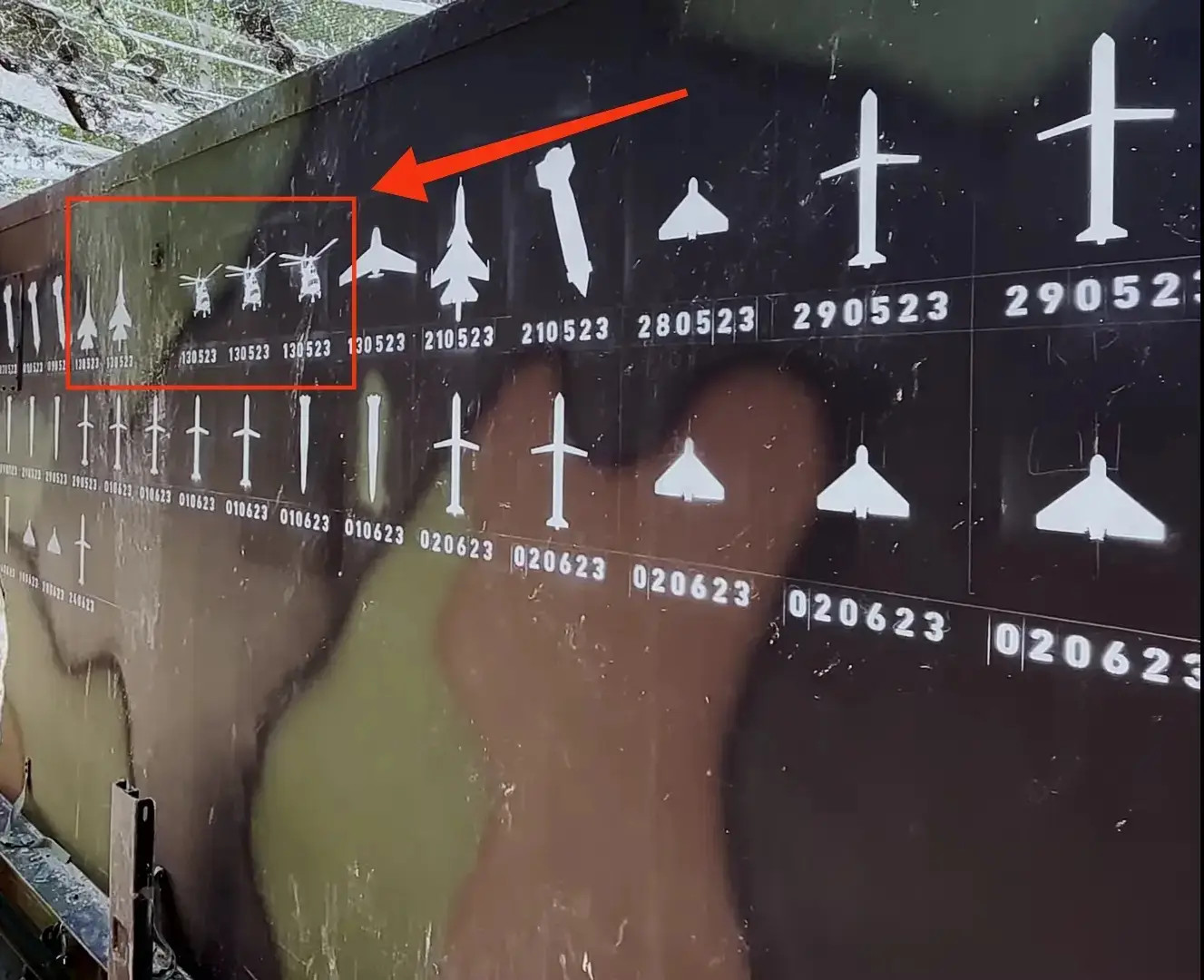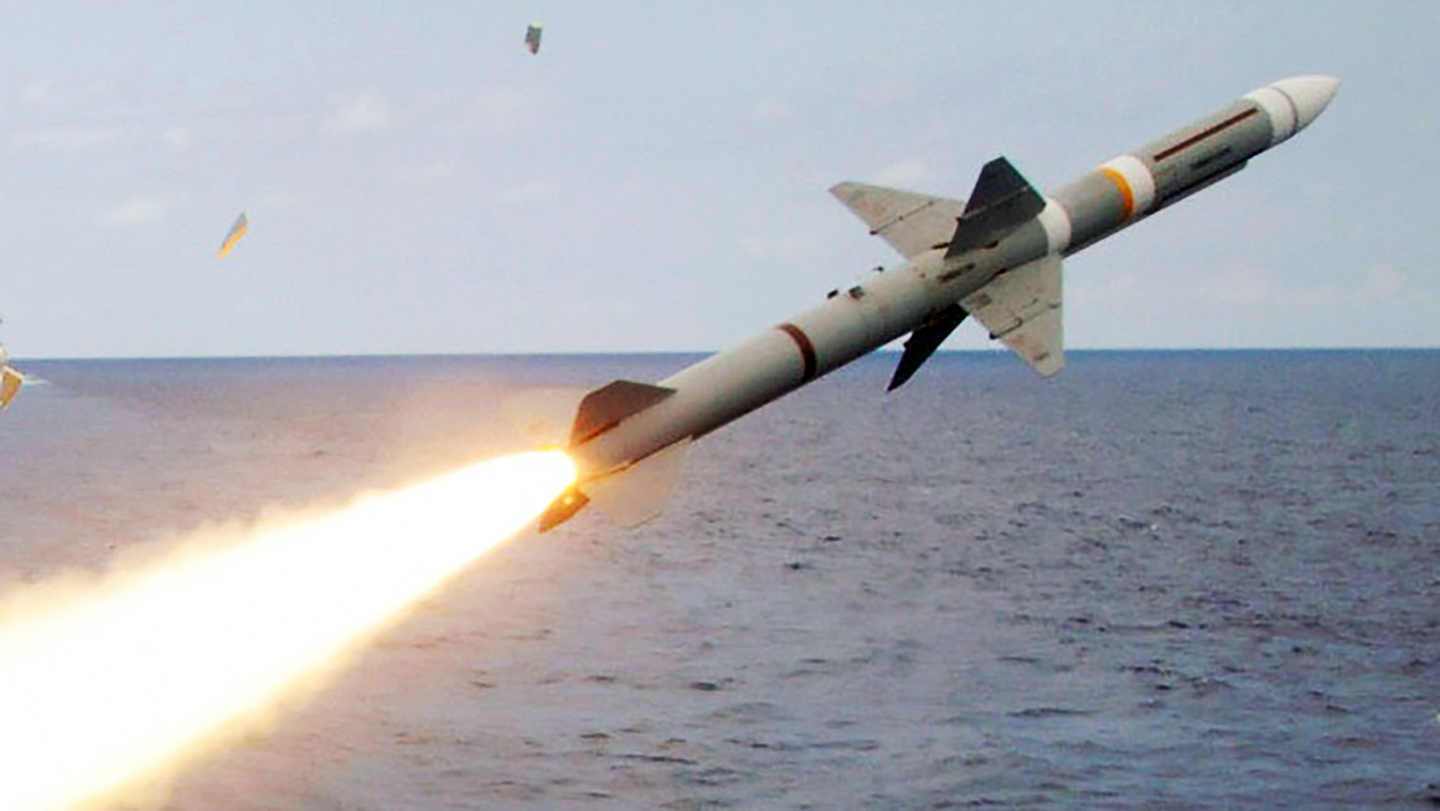At least one type of ad hoc air defense system developed as part of a Pentagon initiative dubbed FrankenSAM is now in service, according to Ukrainian officials. One of these systems scored a kill against an Iranian-designed, Russian-built kamikaze drone in Ukraine just last night.
Col. Yuri Ignat, the Ukrainian Air Force’s top spokesperson, told The War Zone that FrankenSAM systems are now in use and that one knocked down at least one Russian Shahed-type kamikaze drone overnight. A separate statement from Ukraine’s Air Force today claimed that 19 Shaheds were intercepted overnight, but did not specify what air defense systems were used to bring them down.
Earlier today, Oleksandr Kamyshin, Ukraine’s Minister of Strategic Industries, mentioned the employment of a FrankenSAM system to shoot down a Shahed drone last night. He added that this intercept occurred at a range of some five and a half miles (nine kilometers). Kamyshin made his comments while speaking at the annual meeting of The World Economic Forum, commonly referred to simply as Davos after the resort town in Switzerland where it is held. Back in October 2023, Kamyshin said that the first FrankenSAM systems had arrived in Ukraine.
FrankenSAM is an umbrella term for a U.S.-led crash program to bolster Ukraine’s air defense capabilities and capacity by blending new interceptors and other Western components with Soviet-era systems the country already has in service. The existence of this overarching effort came fully to light in October 2023.
The FrankenSAM project includes at least three different systems. The first of these is conversion of Soviet-designed Buk surface-to-air missile systems in Ukrainian service to fire U.S.-made radar-guided AIM-7 Sparrow/RIM-7 Sea Sparrow missiles. The second is another ad hoc system that uses repurposed U.S.-supplied heat-seeking AIM-9M Sidewinder air-to-air missiles as its effector. The last is a blending of U.S.-designed Patriot surface-to-air missiles and their launchers with elements from existing Ukrainian air defense systems, which might include radars from the country’s S-300P systems.
Neither Ignat nor Kamyshin has specified which of these systems are now in use. Kamyshin’s disclosure of an intercept at a range of five and a half miles/nine kilometers provides some hints. This would be well within the engagement envelope for the Buk/Sparrow combination, which you can read more about here. The maximum range of the purpose-built surface-launched RIM-7 is classified, but it is understood to be around a dozen miles under real-world conditions, and possibly longer under certain circumstances.
The AIM-9M-based system could be another possibility, but an intercept five and half miles/nine kilometers away would likely be at the extreme end of its range capabilities. This is roughly the reported maximum range of the most capable variants of the purpose-built MIM-72 surface-to-air missile derivative of the Sidewinder.

Last October, a Financial Times story also quoted an unnamed Ukrainian official as saying the Sidewinder-based FrankenSAM systems would help “get us through the winter.”
“Those [AIM-9] missiles were out of operation,” that official added, according to the Financial Times. “We fixed them. We found a way of launching them from the ground. It’s a kind of self-made air defense.”
Details about exactly what this system consists of remain limited. One possibility is that it could involve the launching of AIM-9Ms from modified Soviet-era Osa wheeled surface-to-air missile systems, also known in the West as SA-8 Geckos. Polish defense contractor PGZ previously pitched a broadly similar Osa conversion with the European IRIS-T missile as its effector. Ukraine has separately received complete IRIS-T surface-to-air missile systems from Germany.
There are, of course, other potential means for employing AIM-9Ms in a ground-based mode. In the past, U.S. defense contractor Boeing has pitched a variant of the turret used in the U.S. Avenger short-range air defense system capable of firing AIM-9X Sidewinders and millimeter wave radar-guided AIM-114L Longbow Hellfire missiles.

The Boeing turret, or a similar design, could be integrated onto various platforms already in Ukrainian service, including the Avenger. Ukraine has received standard Humvee-based Avengers from the United States, which are armed with Stinger short-range heat-seeking missiles and a .50 caliber M3P machine gun.
Reusing elements of MIM-72-armed Chaparral surface-to-air missile systems remain an option, as well. Chaparral components could potentially come from retired U.S. Army examples in storage or from one of the small set of remaining users of this system elsewhere around the world. The primary version of the Chaparral consists of a turreted launcher, which can be loaded with up to four MIM-72s at a time, mounted on a tracked carrier vehicle derived from the M113 armored personnel carrier. Trailer-mounted and navalized versions also exist. Multiple countries have supplied variants of the M113 to Ukraine already.

There is also the Patriot-based FrankenSAM system could have brought down the Shahed. Ukraine’s Patriot systems are known to be in very high demand for use against Russian ballistic missiles and crewed aircraft at extended ranges. However, they have been used against lower-tier threats, including drones and cruise missiles.

There is, of course, the possibility, that multiple FrankenSAM systems are now being employed in Ukraine. Regardless, the program is reminder of the Ukrainian armed forces’ continued demand for improved air defense capabilities and more of them.
Concerns about dwindling Ukrainian stocks of missiles for Soviet-era air defense systems remain. From the beginning, one of the biggest benefits of the FrankenSAM initiative is the opening up of vast new avenues for acquiring additional surface-to-air missiles. The War Zone has highlighted in past how valuable new supply chains like this are for Ukraine in the context of deliveries of National Advanced Surface-to-Air Missile Systems (NASAMS) together with tranches of the very popular AIM-120 Advanced Medium Range Air-to-Air Missile (AMRAAM).
The video below shows NASAMS and other air defense systems in use in Ukraine.

AIM-9Ms are seeing increasingly limited use within the U.S. military and large numbers of these missiles have been exported, providing ample sources that Ukraine can leverage in the future. The same goes for AIM-7/RIM-7 missiles, which have been steadily being phased out of many armed forces worldwide in the past few decades.
Ukraine’s air and missile defense needs have become more pronounced in recent months with Russia’s resumption of large-scale missile and drone barrages. The strikes now include the use of North Korean short-range ballistic missiles and the Russian government is still pushing to acquire similar weapons from Iran. The War Zone has explored in detail how a large influx of additional ballistic missiles into Russia’s arsenal could present serious challenges for Ukraine.
Though intercepting ballistic missiles is beyond the capabilities of most of the FrankenSAM systems, they can still provide valuable additional capacity against lower-end threats. Russian forces often layer drones and different types of ballistic and cruise missiles together during large-scale strikes to create complications for Ukrainian defenders.
The War Zone has been closely following indications in recent months that Ukrainian forces are adopting new tactics to better maximize their air defense capabilities, specially with regard to longer-range types like Patriot. This already appears to be paying dividends, including with Ukraine’s recent claimed shootdown of one of Russia’s very small number of highly valuable A-50 Mainstay airborne early warning and control aircraft. There is the possibility that a Patriot-based FrankenSAM system may have been responsible for that engagement.
There is also a steady need for additional air defense coverage along areas of the front lines in the eastern and southern end of Ukraine. Russian tactical combat jets and lower-end loitering munitions, as well as small improvised armed drones, are major threats to Ukrainian forces on a day-to-day basis.
The addition of new FrankenSAM system to the mix can only help Ukrainian air defenders further expand their overall ability to defend more of the country against a wide array of aerial threats.
Howard Altman contributed to this story.
Contact the author: joe@thedrive.com
